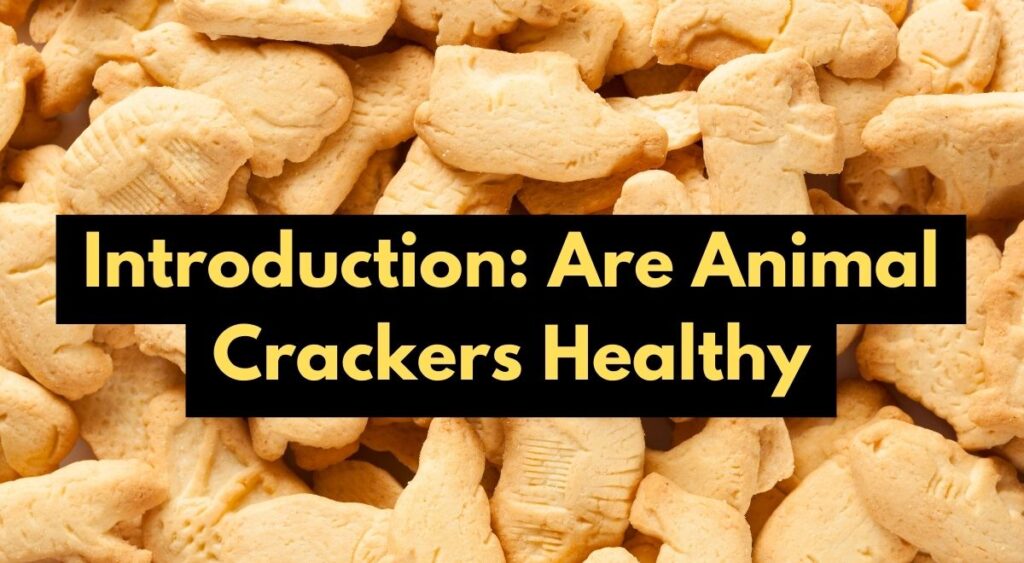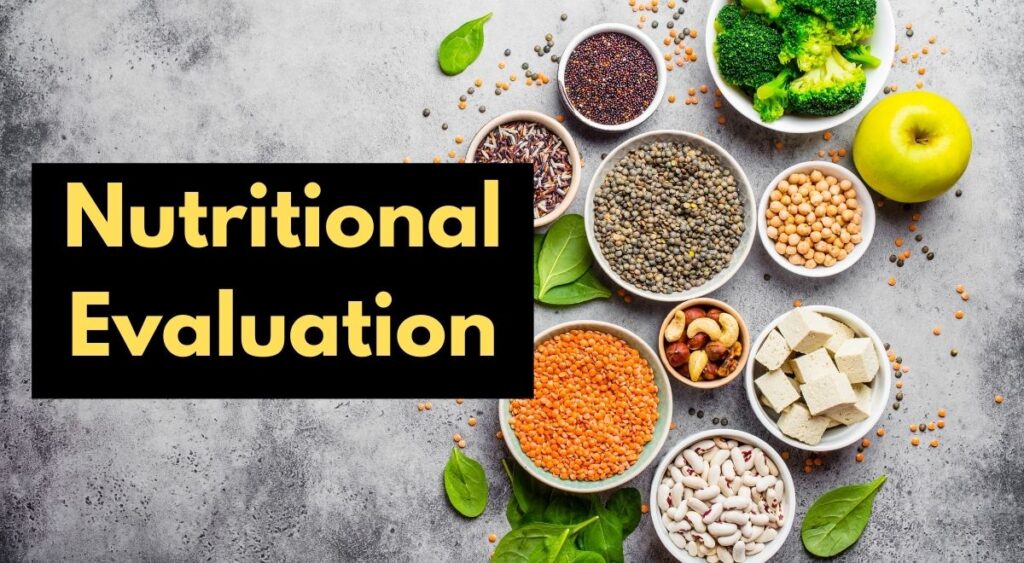1. Introduction: Are Animal Crackers Healthy

What are Animal Crackers?
Animal crackers are a popular snack enjoyed by people of all ages. Typically made from a simple blend of flour, sugar, and flavorings, these crunchy treats often come in the shape of various animals. From lions to elephants, each cracker is whimsically designed to resemble different creatures, making them not only tasty but also fun for kids and adults alike.
Table of Contents
Barkley’s Animal Crackers Overview
Barkley’s Animal Crackers is a renowned brand known for its high-quality snacks. With a long-standing reputation for deliciousness and reliability, Barkley’s offers a wide range of animal crackers that cater to diverse tastes and preferences. Whether you prefer classic flavors or more adventurous varieties, Barkley’s has something for everyone.
Animal Cracker Deliciousness
The appeal of animal crackers extends beyond mere taste. These delightful snacks evoke feelings of nostalgia and childhood innocence for many people. Their crispy texture and subtle sweetness make them a satisfying treat for any occasion, whether enjoyed as a quick snack on the go or as a playful addition to a lunchbox.
Additionally, animal crackers are often perceived as a relatively healthier snack option compared to other sugary treats due to their simple ingredients and low calorie content. However, it’s essential to examine their nutritional value and consider any potential health implications before indulging in them regularly.
In the following sections, we will delve deeper into the nutritional evaluation of animal crackers, explore their health implications, address safety concerns, and provide recommendations for incorporating them into a balanced diet.
2. Nutritional Evaluation
Grade for Animal Crackers
Letter Grade for Animal Crackers
The nutritional value of animal crackers can vary depending on the brand and specific ingredients used in their production. To provide consumers with a quick overview of their nutritional content, many products receive a letter grade based on their overall healthfulness.

While some animal crackers may receive higher grades for containing whole grains or minimal added sugars, others may fare less well due to higher levels of saturated fats or artificial additives. It’s essential for consumers to check the packaging and understand these grades to make informed decisions about their snack choices.
Categories of Nutritional Value
Category ‘A’
Animal crackers that fall into this category typically contain whole grains as their primary ingredient and minimal added sugars. They may also boast additional nutrients such as fiber and protein, making them a relatively healthy snack option.
Category ‘B’
Crackers in this category still offer nutritional benefits but may contain slightly higher levels of added sugars or fats compared to Category ‘A’ products. While they can still be enjoyed in moderation, consumers should be mindful of their overall intake of these ingredients.
Category ‘C’
Products in Category ‘C’ may have more significant amounts of added sugars or fats, making them less nutritious than those in Categories ‘A’ and ‘B’. While they can still be consumed occasionally as a treat, they should not be relied upon as a regular snack option.
Category ‘D’
Crackers in Category ‘D’ may contain high levels of unhealthy fats, added sugars, or artificial additives. Consuming these products regularly can contribute to an imbalanced diet and potentially negative health outcomes. It’s best to limit consumption of these items.
Category ‘F’
Products receiving a grade of ‘F’ typically have very little nutritional value and may be high in unhealthy fats, sugars, and additives. These snacks should be consumed sparingly, if at all, as part of a balanced diet.
Category ‘N’
Products in this category have not been evaluated or do not fall into any of the above categories. Consumers should exercise caution when consuming items in this category and seek out more information about their nutritional content.
In the next section, we will further explore the health implications of consuming animal crackers, including potential short-term and long-term effects, as well as ingredients to be aware of.
3. Health Implications
Are Animal Crackers Bad For You?
Animal crackers can be a tasty snack enjoyed by many, but their health implications depend largely on factors such as portion size, frequency of consumption, and individual dietary needs. Let’s explore some key considerations:

Short-term Side Effects
While consuming animal crackers in moderation is unlikely to cause immediate harm, there are some short-term side effects to be aware of, especially if consumed in excess. These may include:
Sugar Rush:
Animal crackers often contain added sugars, which can cause a quick spike in blood sugar levels followed by a subsequent crash, leading to feelings of fatigue or irritability.
Digestive Discomfort:
Some individuals may experience digestive issues such as bloating or discomfort due to the refined grains and sugars present in animal crackers.
Long-term Side Effects
Repeated consumption of animal crackers over time may contribute to various long-term health issues, particularly if they are a significant component of one’s diet. Potential long-term side effects may include:
Weight Gain:
Animal crackers are calorie-dense and can contribute to weight gain if consumed in excess, especially when combined with a sedentary lifestyle.
Increased Risk of Chronic Diseases:
The high sugar and refined carbohydrate content of animal crackers may contribute to an increased risk of developing chronic diseases such as type 2 diabetes, heart disease, and certain cancers if consumed regularly over time.
Ingredients to Be Aware Of
When evaluating the healthfulness of animal crackers, it’s essential to scrutinize their ingredient list. Some ingredients to be mindful of include:
Added Sugars:
Look out for ingredients such as high fructose corn syrup, cane sugar, or other forms of added sugars, which can contribute to excess calorie intake and adverse health effects.
Trans Fats:
Animal crackers may contain hydrogenated oils or partially hydrogenated oils, which are sources of trans fats known to increase the risk of heart disease.
Artificial Additives:
Some animal crackers may contain artificial colors, flavors, or preservatives, which may have adverse health effects, especially for individuals sensitive to these additives.
In summary, while animal crackers can be enjoyed as an occasional treat, it’s essential to consume them in moderation and be mindful of their potential health implications. Opting for varieties with whole grains, minimal added sugars, and natural ingredients can help mitigate some of these concerns. Additionally, incorporating a diverse range of nutrient-rich foods into your diet is key to supporting overall health and well-being.
4. Safety Concerns
Protecting People from Toxic Chemicals
While animal crackers may seem like a harmless snack, it’s essential to consider potential safety concerns related to their production and packaging. One significant area of concern is the presence of toxic chemicals that can pose risks to human health. Here are some key points to consider:

- Food Packaging Contaminants: Animal crackers, like many packaged foods, may come into contact with harmful chemicals during the manufacturing and packaging process. These chemicals can include phthalates, bisphenol A (BPA), and perfluoroalkyl substances (PFAS), which are known to leach into food and beverages from packaging materials.
- Health Risks: Exposure to toxic chemicals such as phthalates and BPA has been linked to various adverse health effects, including reproductive and developmental issues, hormonal imbalances, and increased risk of certain cancers. PFAS, commonly found in food packaging coatings, have been associated with immune system dysfunction and other health concerns.
- Regulatory Oversight: While regulatory agencies such as the Food and Drug Administration (FDA) in the United States have established guidelines for permissible levels of certain chemicals in food packaging, concerns remain about the adequacy of these regulations in protecting public health. Additionally, enforcement and oversight of these regulations can vary, leading to potential gaps in safety measures.
How can this article be improved?
As with any informative piece, there are opportunities to enhance the quality and relevance of the content to better serve the needs of readers. Here are some suggestions for improving this article:
- In-depth Analysis: Provide a more detailed analysis of specific chemicals of concern, including their sources, potential health effects, and regulatory status.
- Case Studies: Incorporate real-life examples or case studies illustrating instances where food packaging contaminants have impacted public health or prompted regulatory action.
- Expert Insights: Seek input from experts in food safety, environmental health, or regulatory affairs to provide additional perspective and credibility to the article.
- Consumer Guidance: Offer practical tips and recommendations for consumers to minimize their exposure to harmful chemicals in food packaging, such as choosing products with safer packaging materials or reducing reliance on packaged foods altogether.
By addressing these areas of improvement, this article can better equip readers with the knowledge and resources they need to make informed decisions about their food choices and protect themselves from potential health risks associated with toxic chemical exposure.Remember that moderation and variety are key to supporting optimal health and well-being.
5. Additional Resources
Quick Links
For quick access to more information on topics related to animal crackers and nutrition, consider exploring the following resources:
- Healthy Snack Ideas – Discover a wide range of nutritious snack options to satisfy your cravings and support your health goals.
- Understanding Food Labels – Learn how to decipher food labels to make informed decisions about the products you buy, including animal crackers.
- Tips for Healthy Eating – Get practical advice and strategies for incorporating healthy eating habits into your daily routine.
- Nutrition Facts – Access comprehensive nutritional information for a variety of foods, including animal crackers, to help you make informed dietary choices.
Resources
For more in-depth information and research on topics related to nutrition, food safety, and health, consider exploring the following resources:
- Academic Journals – Access peer-reviewed research articles and studies on topics such as the nutritional composition of snacks, the impact of food additives on health, and more.
- Government Websites – Visit websites such as the Food and Drug Administration (FDA) or the Centers for Disease Control and Prevention (CDC) for authoritative information on food safety regulations, dietary guidelines, and public health recommendations.
- Nonprofit Organizations – Explore resources from organizations such as the American Heart Association (AHA) or the Academy of Nutrition and Dietetics (AND) for evidence-based guidance on healthy eating and lifestyle habits.
Join The Insiders Newsletter
Stay up to date with the latest news, research, and insights on nutrition and health by subscribing to The Insiders Newsletter. Join our community of health-conscious individuals and gain access to exclusive content, special offers, and more.
Related Snack Foods
Explore a variety of snack options similar to animal crackers, including:
- Cookie Crisp
- Pani Puri
- Takis
- Potato Waffles
- Cheerwine Soda
- Simply Organic Doritos
- Knoppers Wafers
- Boston Baked Beans Candy
6. Benefits and Side Effects of Animal Crackers
| Benefits | Side Effects |
|---|---|
| Convenient snack option | Potential for excess calorie intake |
| Fun and enjoyable for all ages | Contains added sugars and unhealthy fats |
| Provides a quick energy boost | May contribute to weight gain if consumed excessively |
| Low-cost and widely available | Risk of digestive discomfort, especially for sensitive individuals |
| Can be part of a balanced diet in moderation | Possible long-term health effects due to refined ingredients |
By understanding both the benefits and potential side effects of consuming animal crackers, individuals can make informed decisions about their dietary choices and strive for a balanced approach to snacking. Remember, moderation and variety are key to maintaining a healthy lifestyle.
7. Conclusion and Recommendations
Are Animal Crackers Healthy?
In conclusion, the question of whether animal crackers are healthy depends on various factors, including their nutritional content, portion size, and frequency of consumption. While animal crackers can be a fun and convenient snack option, they may not always align with a balanced and nutritious diet due to their potential for containing added sugars, unhealthy fats, and artificial additives.

Our Wellness Pick
Despite the potential drawbacks, there are ways to enjoy animal crackers more healthfully. Consider opting for varieties that prioritize whole grains, minimal added sugars, and natural ingredients. Additionally, be mindful of portion sizes and aim to incorporate animal crackers as part of a well-rounded diet that includes plenty of fruits, vegetables, lean proteins, and whole grains.
Recommendations for Incorporating Animal Crackers Into a Balanced Diet
Portion Control:
Enjoy animal crackers in moderation and be mindful of portion sizes to avoid excessive calorie intake.
Choose Wisely:
Select animal crackers that prioritize whole grains and natural ingredients over those containing added sugars, unhealthy fats, and artificial additives.
Pair with Nutritious Foods:
Enjoy animal crackers alongside nutrient-rich foods such as fresh fruit, yogurt, or cheese for a more balanced snack.
Diversify Your Snack Options:
While animal crackers can be a tasty treat, don’t rely on them as your sole snack option. Incorporate a variety of healthy snacks into your diet to ensure nutritional balance and satisfaction.
Stay Informed:
Keep up to date with current research and recommendations on nutrition and health to make informed decisions about your food choices.
By following these recommendations and being mindful of your overall dietary habits, you can enjoy animal crackers as part of a balanced and healthy lifestyle

Pingback: Gloria Copeland Health Problems 2024
Pingback: How To Keep Toenails healthy Explain Everything
Pingback: Healthy Snacks From The Gas Station All Secrets